« on: October 09, 2021, 12:28:41 PM »
Eduard 1/48th scale Camel & Co. Limited Edition Dual Combo REVIEWED BY David WilsonScale: 1/48th
REVIEWED BY David WilsonScale: 1/48th
Item #11151
Price: $US 56.91 from Eduard Store direct; £32.85 from Hannants of UK. $A 72.95 in Australia.
Stockist: Available from Eduard Store direct https://www.eduard.com/eduard/camel-%26-co-dual-combo-1-48.html?cur=2&listtype=search&searchparam=sopwith%20camel and through quality hobby retailers worldwide.
Contents: Two complete kits in grey plastic on three frames plus clear parts sprue; ten decal options (including two for Biggles aircraft); colour photo etch set, painting masks. Comment:
The Sopwith Camel is probably the most recognised Allied aircraft of WW1 with almost 5500 machines built and in RFC/ RAF service from 1917 through to the end of the war.
It was used for air to air combat as well as night fighting, shipboard and ground attack roles. Today the Camel is arguably the most famous British aircraft of WW1 and has been a staple of many model manufacturers’ catalogues back to the 1950s.
In many ways the Sopwith Camel is now regarded by many as the Spitfire of WW1 and its enduring fame has been greatly aided by featuring in popular culture – thanks to its starring role in the famous Biggles books of Captain W. E. Johns from the 1930s, and more recently as the comic strip star Snoopy’s fighter for his cartoon duels with the Red Baron.
The rotary-engined Camel saw extensive use in RFC/ RAF squadrons, along with the Australian Flying Corps and many Allied air forces including Canada, Belgium and America, among others. For many, it defines what a WW1 fighter aircraft should be.
 Eduard’s new Camel
Eduard’s new Camel
As the Sopwith Camel is such an iconic aircraft it’s a compulsory addition to any WW1 modeller’s collection irrespective of your personal preferences. (The SE5a is this reviewer’s favourite aircraft of WW1).
But you can’t deny the Camel its pugnacious beauty and WW1 modellers should be applauding Czech manufacturer Eduard who have produced a state of the art, 21st Century quality 1/48 Camel, which supersedes their own earlier Camel kit issued in 1993.
That kit was good but this 2021 model is much better and instantly becomes the industry standard for 1/48th Camels. Eduard are known for their state of the art design and tooling quality and the Camel confirms that reputation.
More than that, Eduard have invested their in depth after market expertise into the Camel project so as well as a state of the art kit they have produced world class quality add ons such as resin wicker seats, bombs, wheels, engines and other after market gems, some of which will feature here in a follow up review soon.
Model kits of the Sopwith Camel date back almost to the dawn of plastic modelling, certainly in 1/48th scale the type was among Aurora’s pioneering line in the 1950s and it’s been a staple of various catalogues in the popular scales ever since. Most recently Wingnuts did a series of 1/32 scale Camels but these did nothing for the 1/48th scale modellers – Eduard to the rescue!
Eduard’s attention to producing a brand new 1/48th Sopwith Camel should be warmly welcomed (and encouraged with sales) as the company, which was founded on its ground breaking range of WW1 subjects in the early 1990s, strayed away from the era to focus on WW2 and modern jets.
Although Eduard regularly reissued its WW1 kits with new marking options, only in recent years have they invested in new tooling for WW1 subjects with the Camel in 2003 and more recently the Siemens Schuckert D.III and SE5a.
The 2021 iteration of the Sopwith Camel is therefore a policy statement by Eduard that they are still a major WW1 kit manufacturer and their Camel combo release is a treasure trove for modellers. The level of detail in Eduard’s WW1 toolings is impressive, capturing incredibly subtle fabric detail, rib tapes on the wings, four optional engines and cowlings and comprehensive cockpit items – impressive in this scale.
The Camel & Co boxing is a double combo kit which comes in a well packed box containing the frames in grey styrene. Each kit has around 89 plastic parts plus quite a few not needed for this edition ( but promising more variants soon!).
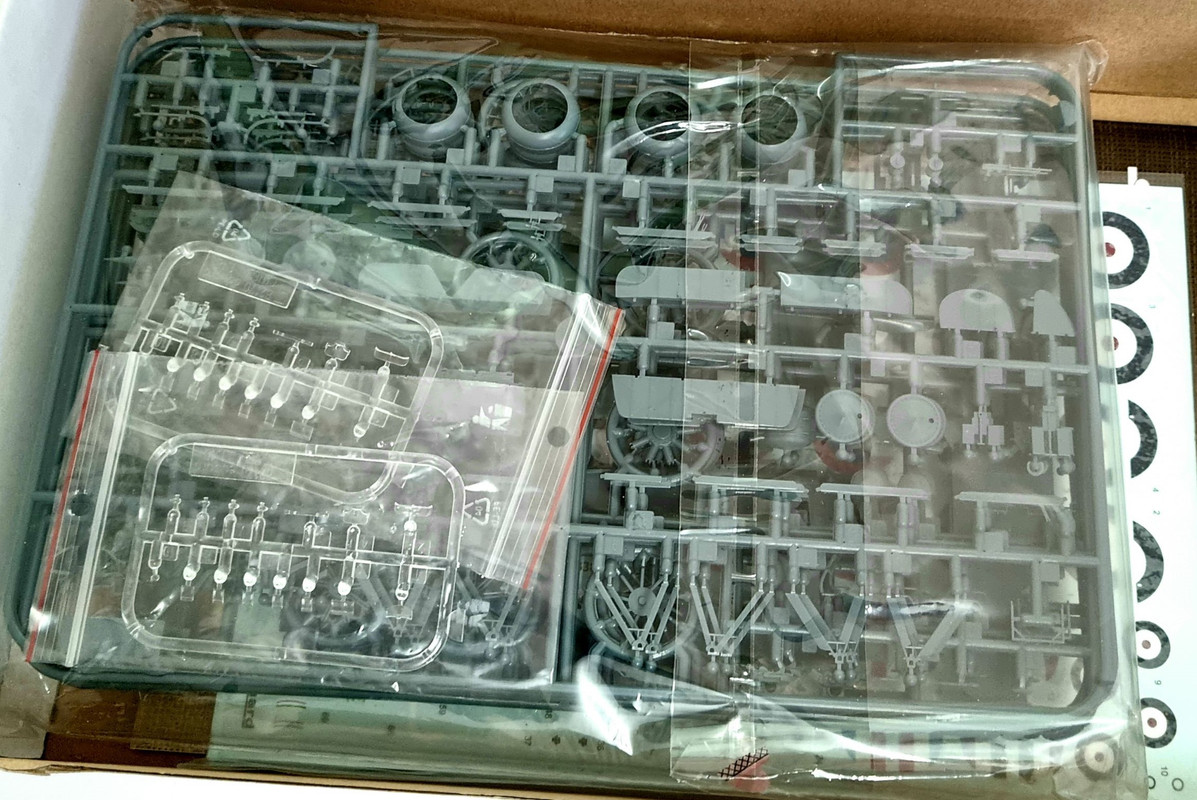 There’s also 8 clear plastic parts, 44 Photo etched pieces, a set of tape masks and decals for a marvellously assorted 10 marking schemes.A great deal of thought has gone into the design of this kit with the wing surfaces featuring a defined stitching and rib tape which on close examination is perhaps over-scale. This can quickly be addressed with a few light swipes of a sanding stick or under a coat of paint.
There’s also 8 clear plastic parts, 44 Photo etched pieces, a set of tape masks and decals for a marvellously assorted 10 marking schemes.A great deal of thought has gone into the design of this kit with the wing surfaces featuring a defined stitching and rib tape which on close examination is perhaps over-scale. This can quickly be addressed with a few light swipes of a sanding stick or under a coat of paint.
Struts and optional landing gear are nicely in scale and not overdone. The kit comes with nicely detailed Vickers guns ( subject of an Eduard aftermarket resin upgrade too) and beautifully detailed but unused (for this combo) Lewis guns and upper wing mounting brackets. These hint at a 2F1 Naval Camel in the future and even better, a Sopwith Comic night fighter.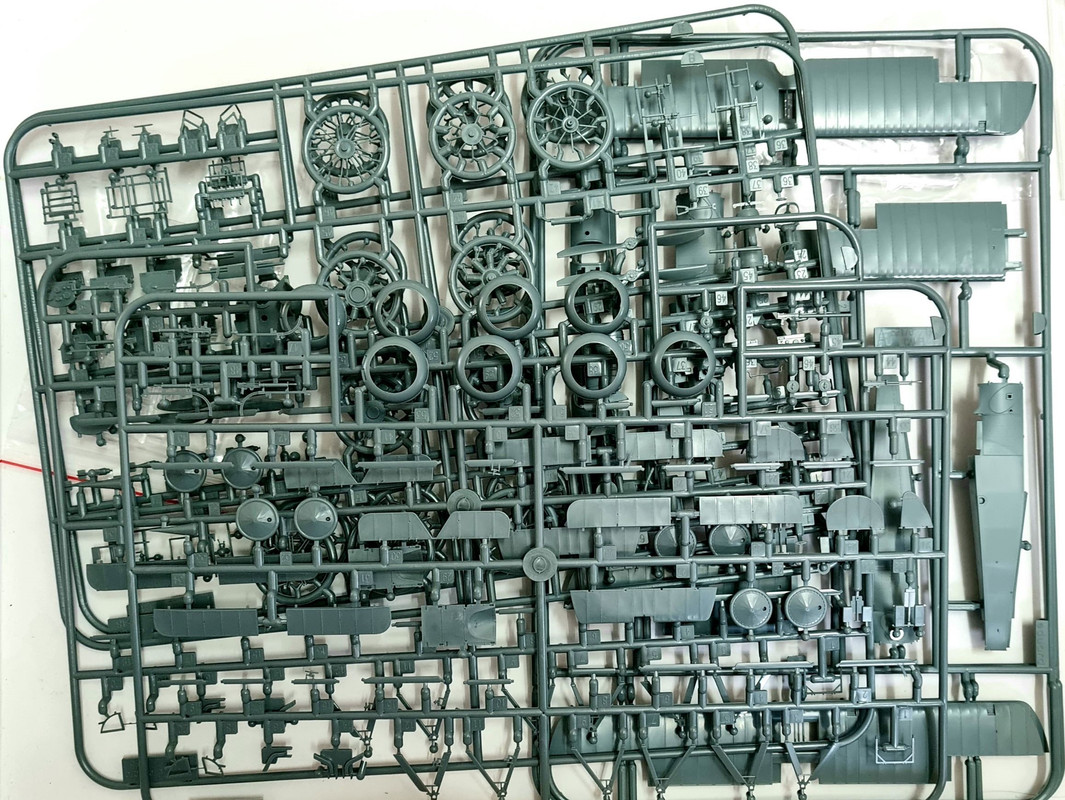
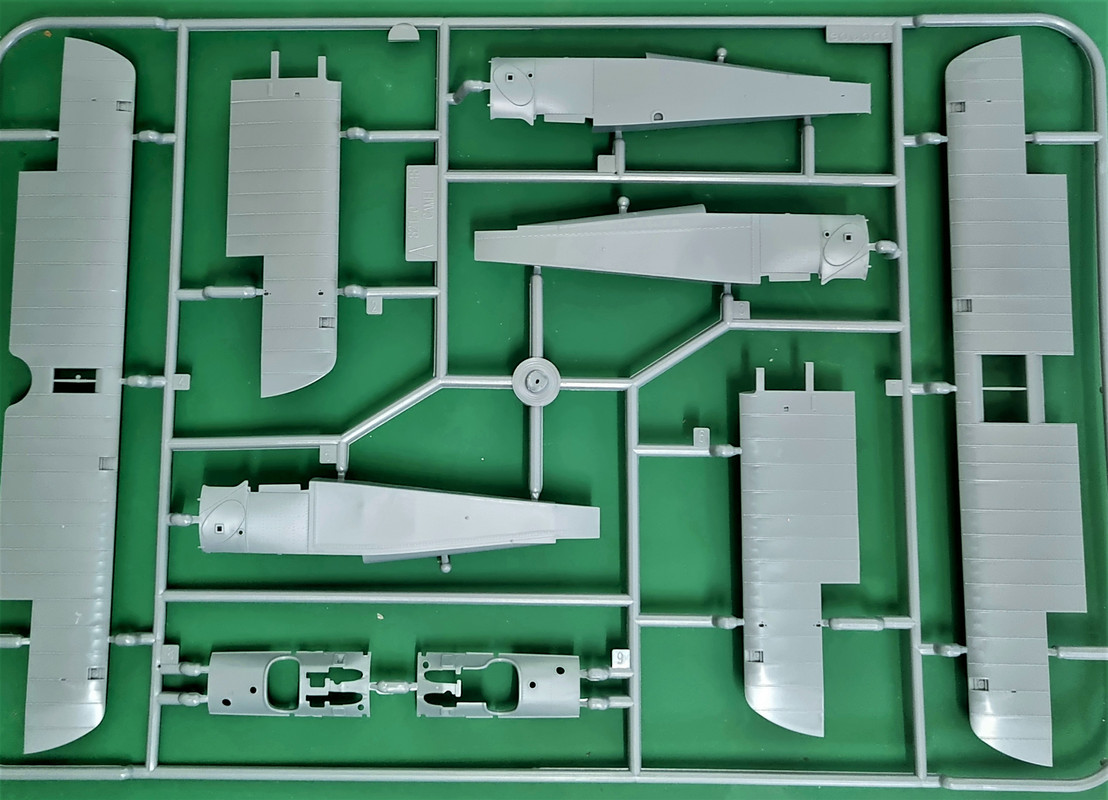
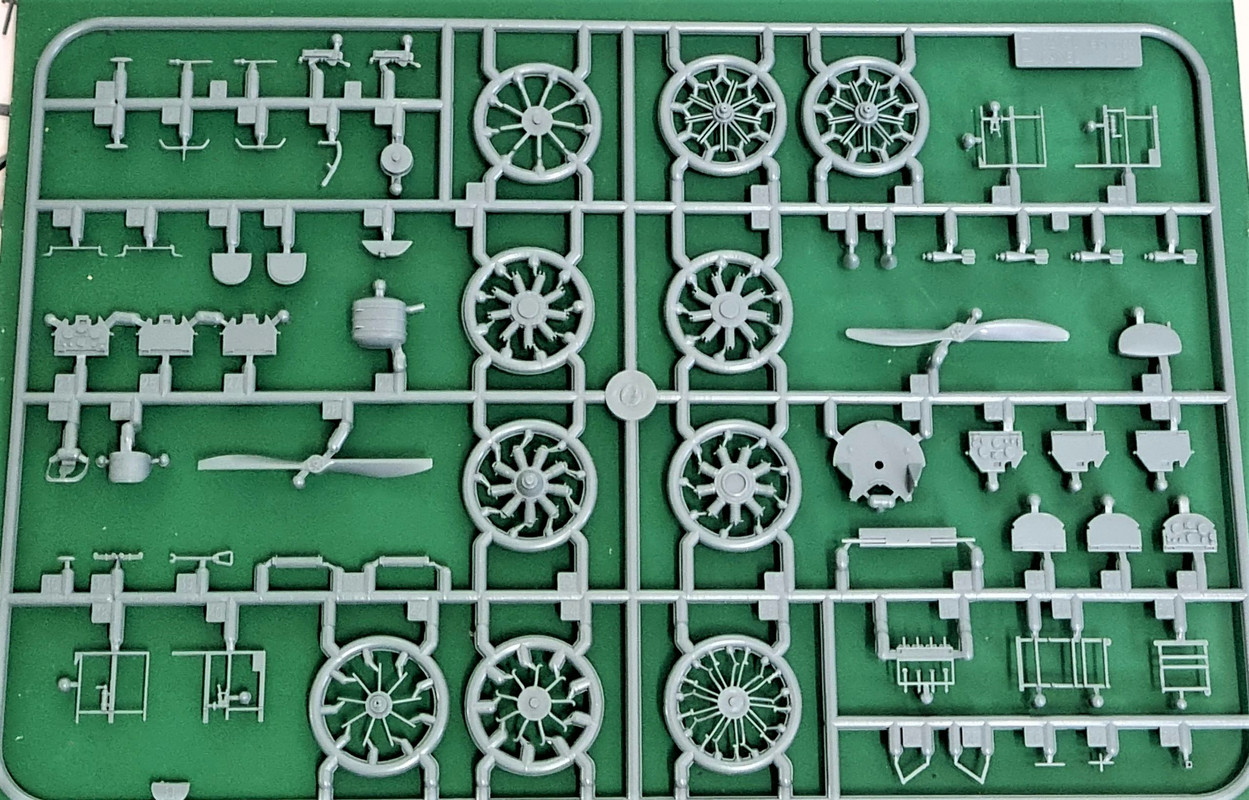
 Eduard obviously believe that a well designed and produced Camel can be a licence to print money and this combo promises to only be the first in the line of a whole extended family of Camel variations.
Eduard obviously believe that a well designed and produced Camel can be a licence to print money and this combo promises to only be the first in the line of a whole extended family of Camel variations.
An in depth exploration of the contents reveals tiny gems with every look. There are so many options- four different rotary engines and cowls for example and a choice of upper wing and fuselages, four Cooper bombs and bracket. The list goes on.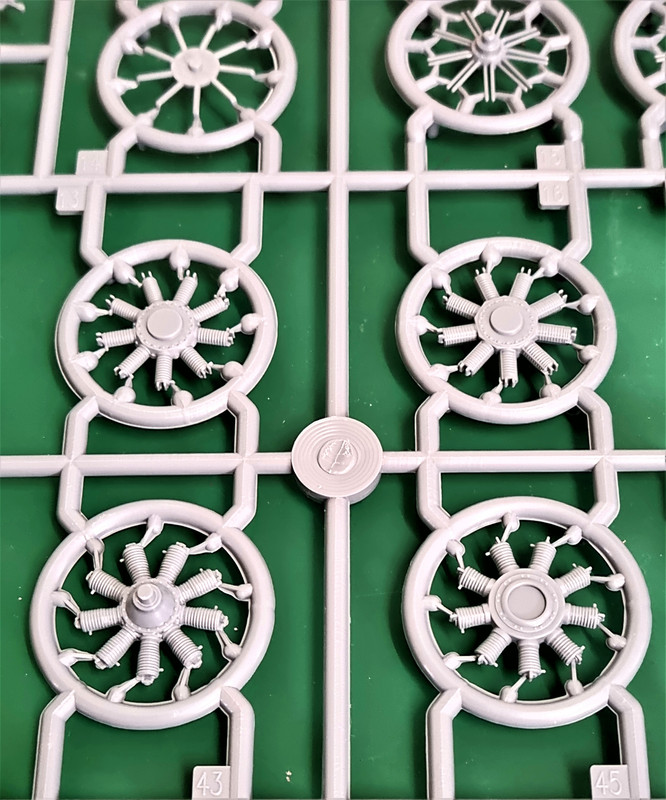
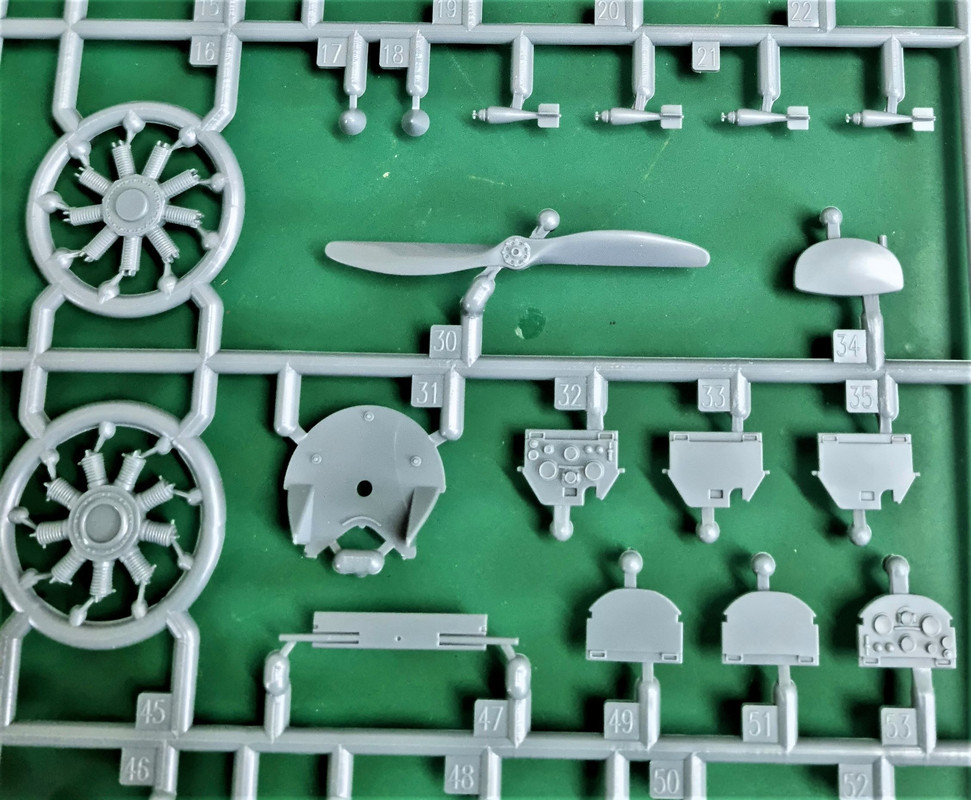
 The photo etch frets contain a wealth of small details which dress up the cockpit and detail areas. A lot of thought has obviously gone into the PE fret which adds a new level of detail with the colour parts including a finely detailed instrument panel and instruments plus seat belts among the many featured items. A self-adhesive, pre-cut tape masking set is also included.
The photo etch frets contain a wealth of small details which dress up the cockpit and detail areas. A lot of thought has obviously gone into the PE fret which adds a new level of detail with the colour parts including a finely detailed instrument panel and instruments plus seat belts among the many featured items. A self-adhesive, pre-cut tape masking set is also included.
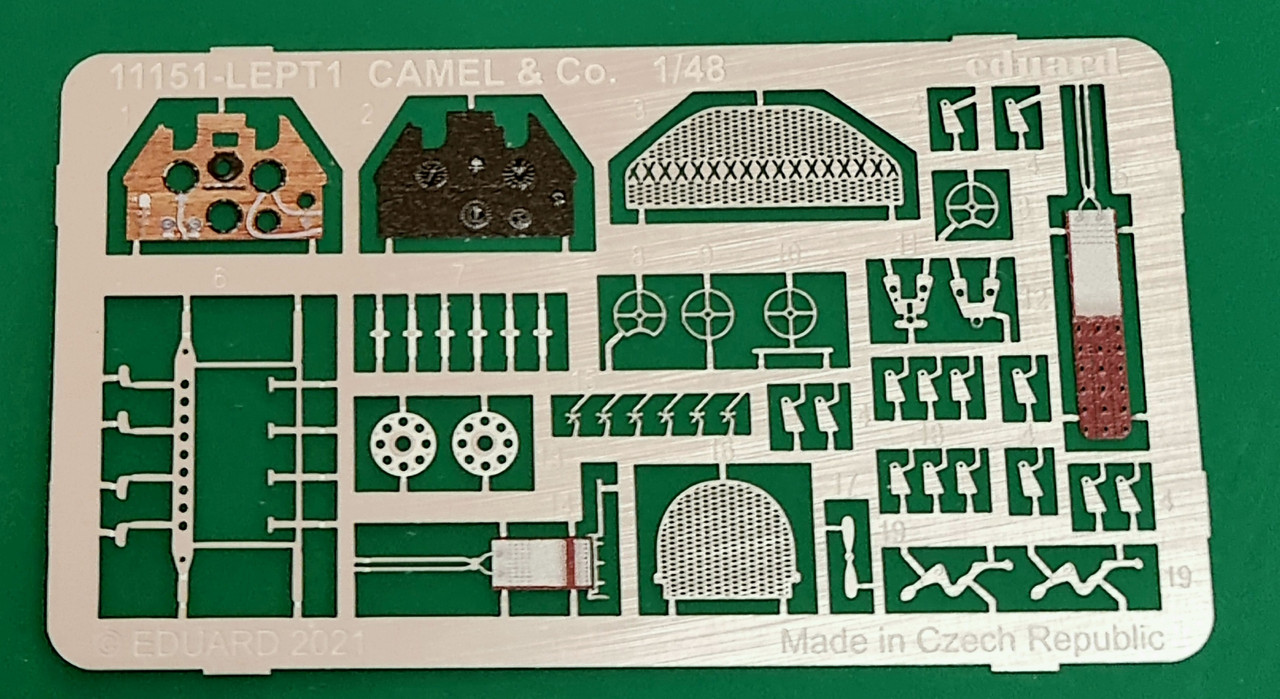
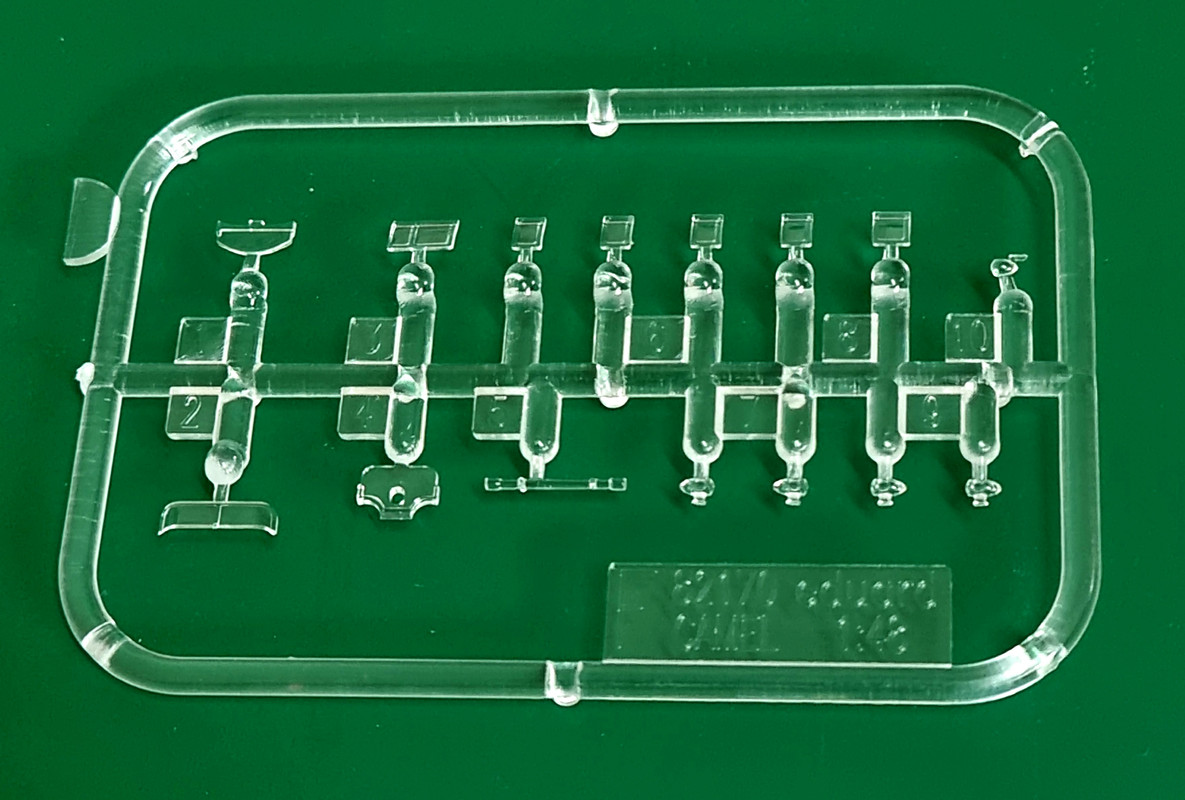
 Instructions:
Instructions:
The instructions booklet is a well illustrated 20 page A4 format on glossy art paper with each step clearly illustrated with exploded view line drawings which also clearly indicate optional parts depending on which version and markings the modeller chooses to make.
The full colour instruction booklet details the build is very clearly illustrated and features a useful rigging diagram too.
Colours are keyed to the Gunze/ Mission Models range. A wider range of paint brands would be appreciated. Vallejo and Humbrol are a personal preference.
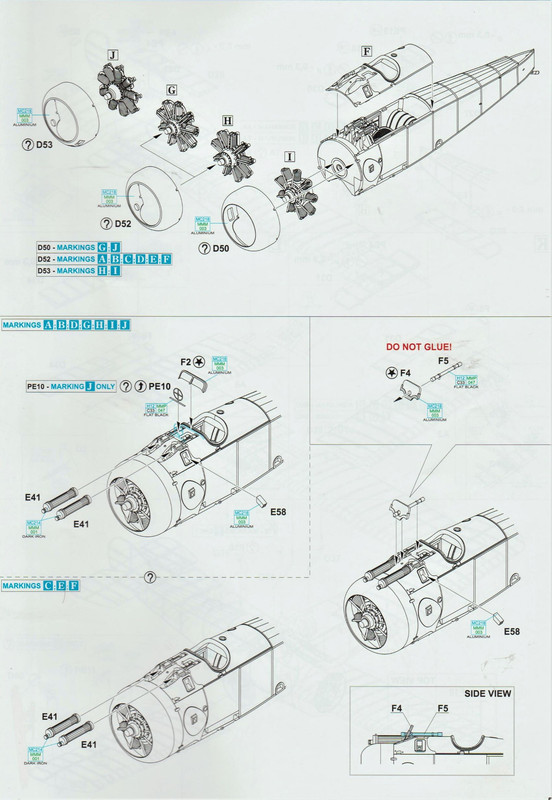
 Marking options and Decals
Marking options and Decals
Ten decal options are provided and here Eduard have gone outside the box with their choice of schemes.
Two schemes are assigned to the Camels flown by the fictional hero Captain James Bigglesworth - Biggles of the W. E. Johns novels, with colours adapted from the original book illustrations.
At a guess I suspect this release was originally intended to be called Biggles & Co but copyright issues might have thwarted that plan. Nevertheless we have two appealing fictional schemes for Biggles.
Scheme A – in striking blue and bright yellow- is distinctive but referring to the original art work that inspired it I would call the scheme blue and a brightish linen or a very muted yellow. It’s a 1930s illustration from “Biggles of the Camel Squadron”. The other marking options are imaginative and welcome. They include Camels flown by NZ ace Captain Clive Collett, Canadian Roy Brown, officially credited with shooting down Manfred von Richthofen, as well as other British, South African and American pilots. The colour scheme array is a very clever marketing ploy to pitch the kit toward international buyers.
The other marking options are imaginative and welcome. They include Camels flown by NZ ace Captain Clive Collett, Canadian Roy Brown, officially credited with shooting down Manfred von Richthofen, as well as other British, South African and American pilots. The colour scheme array is a very clever marketing ploy to pitch the kit toward international buyers.
The full marking options are:A. J1936, Capt. James Bigglesworth, No. 266 Sqn RAF, summer 1918 B. J4613, Capt. James Bigglesworth, No. 266 Sqn RFC, March 1917
B. J4613, Capt. James Bigglesworth, No. 266 Sqn RFC, March 1917 C. B3889, Capt. Clive F. Collett, B Flight, No. 70 Sqn RFC, Poperinge, France, August 1917
C. B3889, Capt. Clive F. Collett, B Flight, No. 70 Sqn RFC, Poperinge, France, August 1917
 D. B7190, Capt. Walter G. R. Hinchliffe, C Flight 10(N) Sqn RNAS, Téteghem, France, March 1918
D. B7190, Capt. Walter G. R. Hinchliffe, C Flight 10(N) Sqn RNAS, Téteghem, France, March 1918 E. B3893, Capt. Arthur Roy Brown, No. 9(N) Sqn RNAS, Leffrinckoucke, France, September 1917
E. B3893, Capt. Arthur Roy Brown, No. 9(N) Sqn RNAS, Leffrinckoucke, France, September 1917 F. N6377, Capt. Harold F. Beamish, 3(N) Sqn RNAS, Furnes, Belgium, September 1917
F. N6377, Capt. Harold F. Beamish, 3(N) Sqn RNAS, Furnes, Belgium, September 1917
 G. Capt. Henry R. Clay Jr, 41st Aero Squadron USAAS, Colombey-les-Belles, France, October 1918
G. Capt. Henry R. Clay Jr, 41st Aero Squadron USAAS, Colombey-les-Belles, France, October 1918 H. C6713, Capt. D´Urban Victor Armstrong, No. 151 Sqn RAF, Crécy-Estrées, France, April 1918
H. C6713, Capt. D´Urban Victor Armstrong, No. 151 Sqn RAF, Crécy-Estrées, France, April 1918 I. C1555, Capt. Francis L. Luxmoore, No. 78(HD) Sqn RFC, Hornchurch, Great Britain, January 1918
I. C1555, Capt. Francis L. Luxmoore, No. 78(HD) Sqn RFC, Hornchurch, Great Britain, January 1918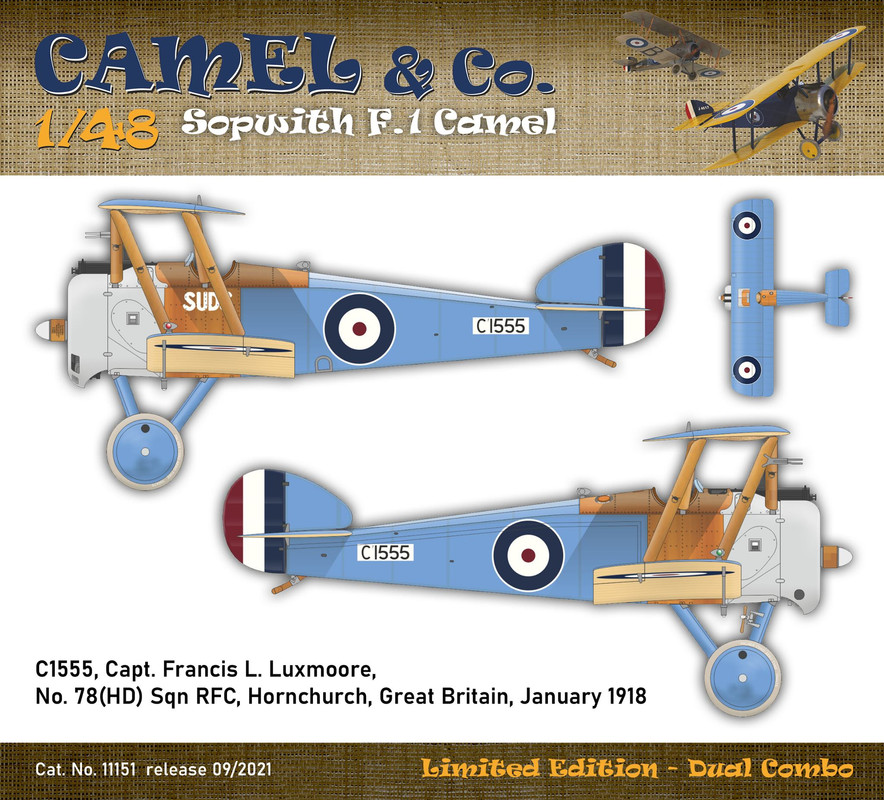 J. F1471, 185th Aero Sqn USAS, Colombey-les-Belles, France, March 1919
J. F1471, 185th Aero Sqn USAS, Colombey-les-Belles, France, March 1919 Decal quality looks excellent and in perfect register as you would expect of Eduard’s decals.
Decal quality looks excellent and in perfect register as you would expect of Eduard’s decals.
Bear in mind this Combo release has two complete kits in it, so the 10 marking options are a feast for the modeller. 
 Summary:
Summary:
Eduard delivers a state of the art Sopwith Camel that defines quality. Easily the best 1/48th Camel kit on the market and a must-have for WW1 enthusiasts. We expect to see many builds of this kit on the Forum!
Verdict:
Our Highest Recommendation.
(Review kit kindly supplied by Eduard)
Please support the businesses that support our Forum.)
« Last Edit: March 25, 2022, 11:16:19 PM by Dave W »

Logged
Owner and Administrator of ww1aircraftmodels.com and forum.ww1aircraftmodels.com